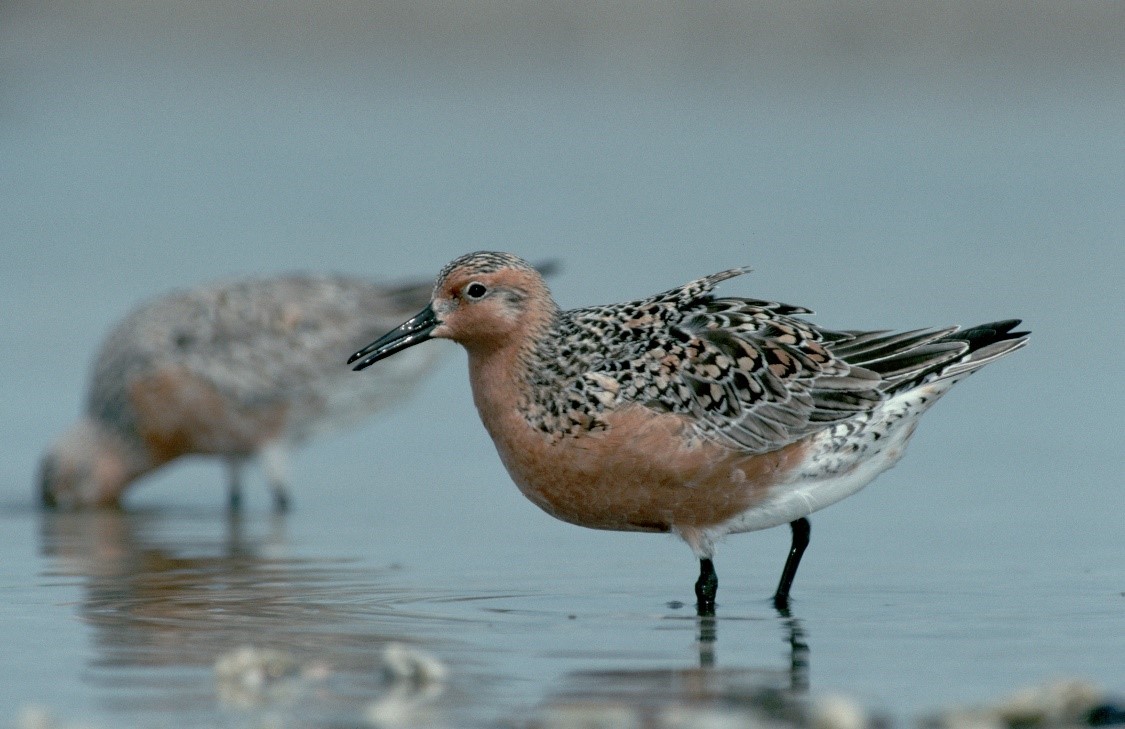May 26, 2020
DEP Milestones: It’s 1989,
Cape May National Wildlife Refuge Becomes a Reality and Provides Critical Habitat

The red knot is a 9- to 10-inch sandpiper, with a short black bill, dark brown to black legs during breeding season, and a russet color breast and belly.Along the way, it spends some time in New Jersey. The Garden State is a coastal stopover for the red knot during spring (mid-May through early June) and fall (late July through November) migration periods.
This sandpiper breeds in the tundra of the central Canadian Arctic and winters on the southern tip of South American, as well as northern Brazil, the Caribbean and the southeastern and Gulf coasts of the United States.
“Delaware Bay is one of the most important bird stopovers in the world, and a critical stopover …” for migrating red knots, who converge on the bay to rest and refuel, the DEP says.
The stop, according to the DEP, is critical because shorebirds need to pack on weight – and energy. When knots arrive at Delaware Bay, they are mostly skin, feathers and bone. The bay area provides the only food suitable to pack on the calories they need: soft, easily digestible horseshoe crab eggs – and lots of them.
However, this intrepid traveler is considered endangered in New Jersey and is federally protected by the Migratory Bird Treaty Act. Among the threats to the red knot are sea level rise, coastal development, disturbance by vehicles and people, and climate change.
And now, a look at 1989 …
In 1989, the Cape May National Wildlife Refuge was established, preserving thousands of acres of critical habitat for a wide variety of migratory birds and other wildlife, including red knots, ruddy turnstones, sanderlings, semipalmated sandpipers and horseshoe crabs.
At the May 13, 1989, dedication ceremony in Middle Township, then-U.S. Rep. William J. Hughes said in his keynote speech: “The Cape May Peninsula is one of southern New Jersey’s greatest natural treasures. It’s important for all of us to work together to preserve the rural character of this region and protect its natural resources now, before it’s too late.”
As far back as 1972, the U.S. Fish and Wildlife Service had proposed the creation of a national wildlife refuge at the lower end of the Jersey Cape, but the idea never came to fruition. Throughout the intervening years, more and more land in Cape May County was lost to development. In 1987, the DEP’s Division of Fish, Game and Wildlife stepped in with a proposal to protect one of the last large blocks of undeveloped habitat in this key area for migratory birds along the Atlantic Flyway.
Today, the 11,500-acre refuge supports 317 bird species, 42 mammal species, 55 reptile and amphibian species, and a wealth of fish, shellfish and other invertebrates.
###